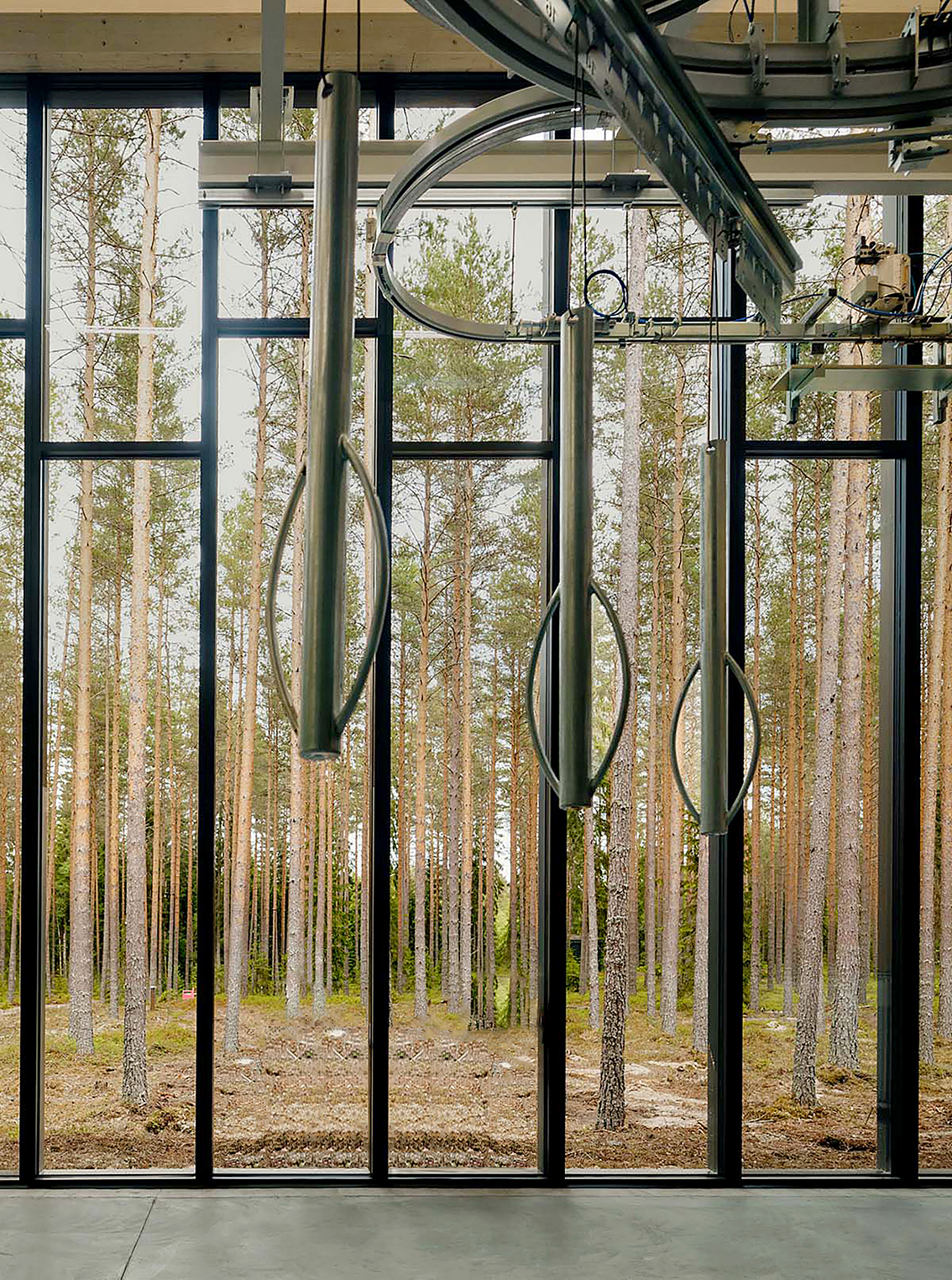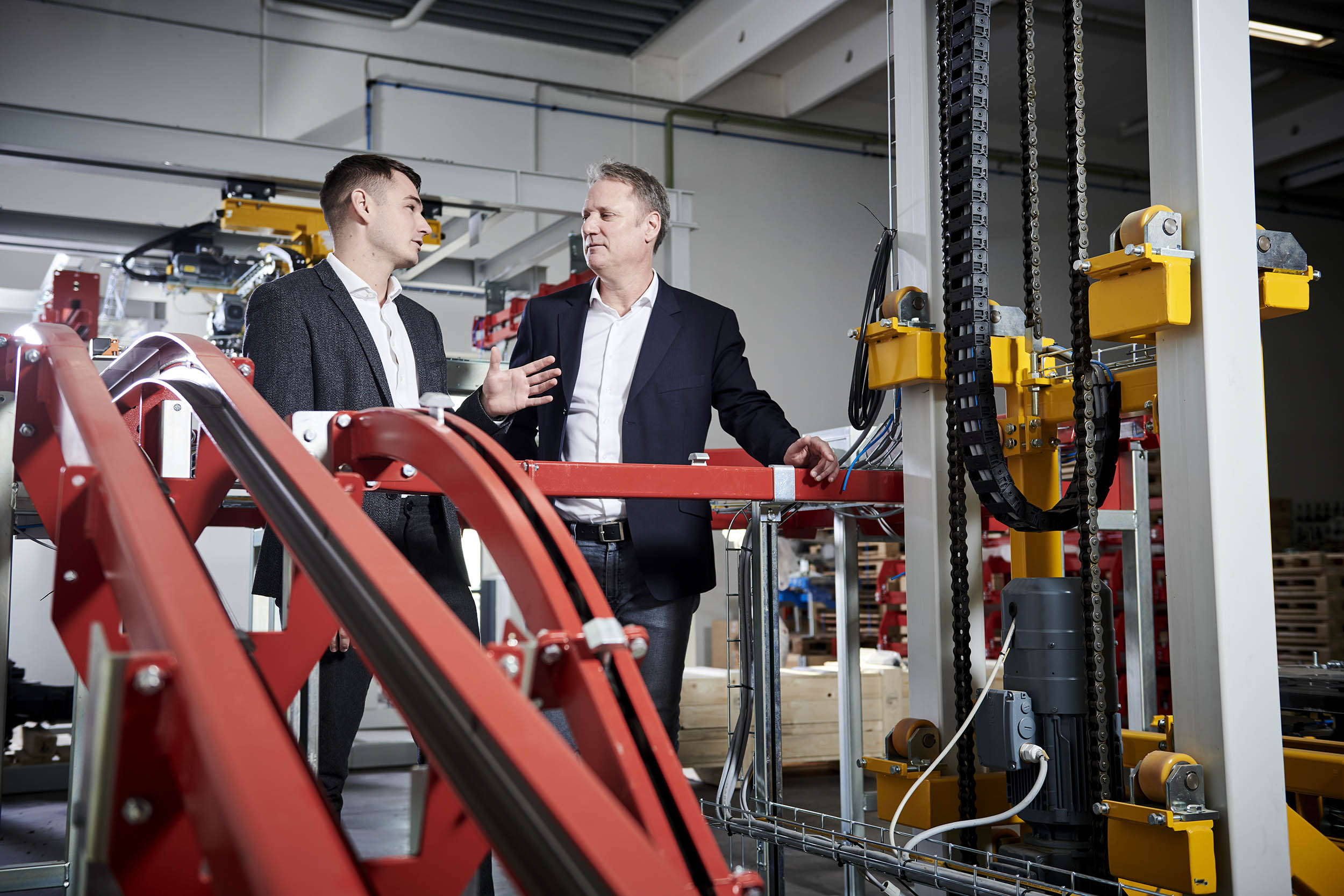Conveying the future
The Plus plant stands deep in the Norwegian pine forest, a two-hour car drive from Oslo. The elegant glass and wood building, named after its plussign shape, resembles a stylish museum or conference centre more than a production plant. But the aesthetic design is deliberate: Plus is intentionally built for people to visit and watch the production process in action. Transparency and sustainability guide every detail of the plant – from the working conditions to energy savings, and how the surrounding forest is managed. Together, the owner Vestre and Danish architects Bjarke Ingels Group created a new typology that integrates people, production, technology, architecture and nature. Past the courtyard, a Caldan overhead conveyor feeds the steel parts for the furniture into an automated surface treatment line. The 800m power and free conveyor system transports the parts into pre-treatment, and from there through an ad hesive water dryer, cooling zone and powder coating booth before they enter the curing oven.
hesive water dryer, cooling zone and powder coating booth before they enter the curing oven.
For Danish company Caldan, delivering the low-energy conveying system that transports pieces of furniture along the production process was a landmark project. “We were delighted to be selected as the conveyor supplier for such a visionary project,“ says Christian Calundan, Area Sales Manager at Caldan. “The Plus project clearly shows that sustainability and highly efficient manufacturing are compatible, a future direction that we expect industry to move towards.” The project demanded unique tweaks to Caldan’s modular solution. First, it needed to be adapted for mounting on wooden beams instead of typical steel girders. Then, new curves were added to the design for visual impact and maximum functionality. Vestre’s emphasis on aesthetic design also resulted in the lubrication pots being hidden from view, and all pipes and cables concealed in the walls or wooden structure. Erik Calundan, Caldan’s Marketing Manager, says: “Usually we supply to the heavy welding or automotive industry, where they don’t care that much about what the conveyor system looks like. Here, we needed to provide a product that was high-class on the inside, as well as on the outside.”
The largest incestment in the Norwegian furniture industry for decades, the facility is claimed to use 60 percent less energy than equivalent conventional factories – a figure that would rise to 90 percent if the manufacturing equipment’s energy footprint is included. Caldan’s energy efficient overhead conveyors contribute to this effort. Their high precision also allows Vestre to stack more furniture parts inside its paint drying oven, further reducing energy use. Designed to take back old furniture for recycling and reuse at end of life, the production process uses locally produced materials, including paints and pigments compliant with the EU’s REACH standard on chemical substances. Vestre’s aim is for the factory to be the world’s first furniture plant to achieve the highest environmental certification, BREEAM Outstanding. For Caldan, the venture marks a new frontier in industrial production.

“What the project tells us is that you can produce attractive furniture, integrate sustainably and make a profit. That’s a strong signal to send to our industry.” says Erik Calundan